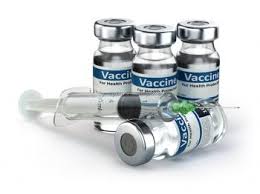- Home
- Editorial
- News
- Practice Guidelines
- Anesthesiology Guidelines
- Cancer Guidelines
- Cardiac Sciences Guidelines
- Critical Care Guidelines
- Dentistry Guidelines
- Dermatology Guidelines
- Diabetes and Endo Guidelines
- Diagnostics Guidelines
- ENT Guidelines
- Featured Practice Guidelines
- Gastroenterology Guidelines
- Geriatrics Guidelines
- Medicine Guidelines
- Nephrology Guidelines
- Neurosciences Guidelines
- Obs and Gynae Guidelines
- Ophthalmology Guidelines
- Orthopaedics Guidelines
- Paediatrics Guidelines
- Psychiatry Guidelines
- Pulmonology Guidelines
- Radiology Guidelines
- Surgery Guidelines
- Urology Guidelines
4-in-1 flu shot may mean lifelong protection against the flu

A vaccine combining centralized ancestral genes from four major influenza strains appears to provide broad protection against the dangerous ailment, according to new research by a team from the Nebraska Center for Virology.
Mice protected by the unconventional vaccine survived exposure to lethal doses of seven of nine widely divergent influenza viruses. Those that received higher doses of the vaccine didn't even get sick.
In contrast, mice that received traditional flu shots or nasal sprays all sickened and died when exposed to the same viruses. The deadly pathogens were able to evade the immune responses triggered by the traditional vaccines.
While it is too soon to say the approach could be successfully used in humans, it appears to be a promising avenue toward a universal flu shot, according to lead researcher Eric Weaver, an assistant professor in the School of Biological Sciences at the University of Nebraska-Lincoln.
Weaver said the study is the first to report on whether a universal flu shot could be created by using a combination of multiple genes shared at the ancestral level by flu strains circulating today.
"The ultimate goal is to be able to vaccinate once and provide lifelong protection," Weaver said.
The Centers for Disease Control and Prevention estimates that 40 million Americans contracted influenza during the 2015-16 flu season and 970,000 people were hospitalized for the ailment. The agency estimated that vaccinations prevented about 1.9 million illnesses and 67,000 hospitalizations.
"To put this in other terms, our current influenza vaccine programs and technologies reduce influenza infections and hospitalizations by 4.75 percent and 6.9 percent, respectively," Weaver said. "There is no doubt that there is a need for more effective vaccine technologies."
Yet because the influenza virus mutates rapidly and because people, animals, and birds often carry the virus without displaying symptoms, it's been difficult to develop a vaccine with long-term effectiveness. The conventional influenza vaccine platform uses weakened or dead versions of the influenza virus to stimulate immunity against hemagglutinin (HA), a spike-shaped protein that extends from the surface of the virus and attacks cells.
According to a 2013 Clinical Microbiology Reviews article, the challenges of the conventional approach include predicting which flu strain will circulate in coming years; manufacturing and delivering safe, timely and adequate supplies; and poor responsiveness among the elderly, who often are the most vulnerable to influenza infection.
Conventional vaccines have been shown to be less than 60 percent effective when they're successfully matched to the currently circulating strain. They're far less effective when mismatched.
"An ideal influenza vaccine would be inexpensive, provide long-lasting immunity, require few immunizations and would work against all variants of the virus," Weaver said.
Some experts say it could take until 2020 or 2025 before a universal flu vaccine is available.
The pursuit of a universal influenza vaccine has been difficult. Scientists are trying various approaches to better match vaccines to multiple viral strains. Other strategies include developing vaccines aimed at the virus's protein coat, other proteins have been found to be identical in multiple flu strains, or the stalk of the hemagglutinin protein rather than its head.
These approaches have shown promising results. However, Weaver said his study is the first to report the use of multiple centralized HA genes, identified using protein sequence analysis programs, to provide the greatest level of cross-protective immunity possible.
In the article published Nov. 2 in Scientific Reports, Weaver and his colleagues Amy Lingel and Brianna L. Bullard detail an approach they say is "scalable and translatable to humans and may provide the foundation for complete and long-lasting anti-influenza immunity."
The idea arose from past research led by Dr. Bette Korber at Los Alamos National Laboratories to discover the ancestral genes for the Human Immunodeficiency Virus and to pinpoint when that virus jumped from monkeys to man. Weaver was involved with that effort while a post-doctoral researcher at Duke University School of Medicine. He and his colleagues decided to try a similar concept with the influenza virus, synthesizing genes that are central to influenza's phylogenetic tree.
Instead of using weakened or deadened flu virus, his experiments at the Nebraska Center for Virology have used replication-defective Adenoviruses - which cause the common cold - that have been altered to carry what he calls consensus genes for H1, H2, H3 and H5 influenza strains. The vaccine is no longer capable of causing cold symptoms but is still able to safely deliver the influenza vaccine genes.
"Our idea is that these centralized antigens can set up a foundation of immunity against influenza," he said. "Because they are centralized and represent all the strains equally, they could provide a basis for immunity against all evolved strains."
For more details click on the link: http://dx.doi.org/10.1038/s41598-017-14891-y

Disclaimer: This site is primarily intended for healthcare professionals. Any content/information on this website does not replace the advice of medical and/or health professionals and should not be construed as medical/diagnostic advice/endorsement or prescription. Use of this site is subject to our terms of use, privacy policy, advertisement policy. © 2020 Minerva Medical Treatment Pvt Ltd